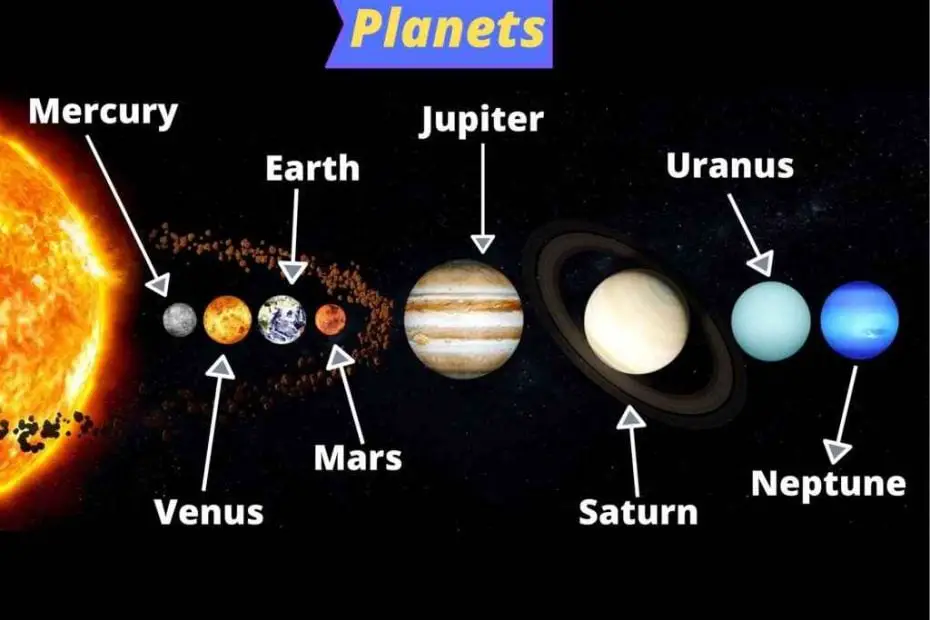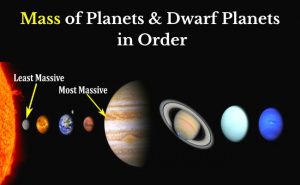A planet is a large and rounded astronomical object that orbits around its sun. Our solar system has 8 planets, and all eight planets are mentioned below in order of increasing distance from the sun:
- Mercury – 1st planet from the sun,
- Venus
- Earth
- Mars
- Jupiter
- Saturn
- Uranus
- Neptune – 8th planet from the sun.
These were all 8 planets in order from the sun of our solar system. Apart from the eight planets, our solar system has 5 dwarf planets, hundreds of moons that orbit planets, millions of asteroids, comets, and, other small solar system objects.
Here in this article, we have mentioned our eight solar system planets list with some interesting facts and information.
Types of Solar System Planets
Mainly, there are two types of planets in our solar system:-
- Terrestrial or inner planets – Mercury, Venus, Earth, and Mars.
- Giant or outer planets – Jupiter, Saturn, Uranus, and Neptune
According to scientists, our Universe has billions of planets but our solar system only has 8. There are other different types of planets that exist but are not in our Solar System, such as rogue planets and exoplanets.
Now, check below some informative and educational facts about the eight planets of our solar system.
Terrestrial planets (inner planets)
The number of terrestrial planets in our solar system is four; Mercury, Venus, Earth, and Mars. These worlds are closest to the sun and have rocky surfaces.
They are also called ‘rocky planets’ as their surface is solid in nature and contains silicate rocks and metals. The word “terrestrial” is derived from the Latin word “terra“, which means ‘land’ or ‘earth’. So all the terrestrial planet has an earth-like solid surface structure and a metallic core.
1. Mercury Facts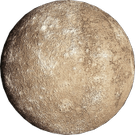
- Mercury is the fastest and nearest planet that orbits around the sun. The average distance from the Sun of Mercury is 0.387 AU.
- Its orbital speed is 47.87 km/sec around the sun.
- It completes one orbit in 88 earth days.
- The surface temperature of mercury ranges from ‘-175 °C to 430 °C’.
- Mercury is an extremely hot planet because it is the nearest to the sun. Though it is not the hottest in our solar system planet.
Must Check:- Facts about Planet Mercury
2. Venus Facts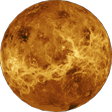
- It is the hottest in all eight planets of our solar system even hotter than Mercury.
- This planet is the nearest to earth and 2nd nearest to the sun after Mercury. The average distance of Venus from the sun is 0.722 AU.
- The surface temperature of Venus ranges from ‘-220 °C to 465 °C’.
- Venus has some nicknames like “evening star”, “morning star”, “veiled planet”, “earth’s twin”, and “earth’s sister”.
- It is the 2nd fastest planet that has an orbital speed of 35.05 km/sec and it completes one orbit around the sun in 225 earth days.
- Planet Venus has high pressure on its surface. It is 92 times higher than the atmospheric pressure on earth.
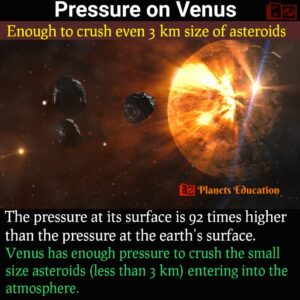
Read in detail:- All information about Planet Venus
3. Earth Facts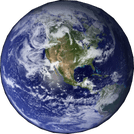
- Earth is the largest terrestrial planet and the only known planet that has life on it.
- It is the 3rd planet from the sun with a mean distance of around 1 AU.
- It travels around the sun with a speed of 29.78 km/sec and completes one orbit in 365.24 earth days.
-
The magnetosphere of the earth protects us from harmful solar and cosmic winds.
-
It is known as a ‘blue planet’ and ‘watery planet’ because of the large amount of water present on it.
- 71% surface of the earth is covered with water.
- The atmosphere of the earth has a supportive living environment. Earth’s atmosphere has been divided into different types of layers for different purposes.
- Earth has an ozone layer in its atmosphere that protects us from the harmful ultraviolet radiation of the sun.
Read about:- Facts About Our Earth
4. Mars Facts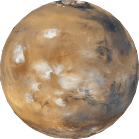
- The orbital speed of the mass is 24.07 km/sec and it completes one orbit around the sun in 687 earth days. The mean orbital path of Mars is almost 1.52 AU from the sun.
- It is also a ‘red planet’ because of a large amount of iron oxide present on it, which gives it a reddish appearance.
- Mars has two natural satellites, Phobos and Deimos.
- The highest known mountain ‘Olympus Mons’ is on mars. It is approximately 22 km high.
- Mars will also have a ring around it in the future. It is estimated that its moon Phobos will tear apart after 30 million years which would create a ring around it.
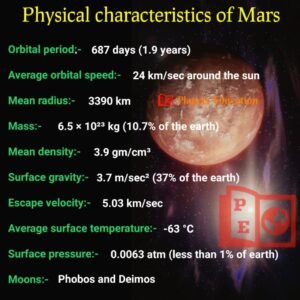
Must Read:- Facts about Planet Mars
Giant planets (outer planets)
There are also four giant planets; Jupiter, Saturn, Uranus, and Neptune. Jupiter and Saturn are called ‘gas giant planets’ whereas Uranus and Neptune are called ‘ice giant planets’.
- They are quite bigger in size, that’s why they are known as “giant worlds”.
The outer planets are mostly made of gases like hydrogen, helium, methane, and ammonia. These worlds are massive and they have rings around them.
- One of the interesting facts about the outer planet is, that you can not stand on its surface as these are made of gases.
5. Jupiter Facts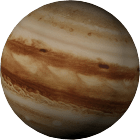
- Jupiter is the largest and most massive of all 8 planets of our solar system with a mass of 1.9 × 1027 kg.
- The mass of Jupiter is more than 2.5 times greater than the mass of all other combined planets. Its mass is 318 times greater than the mass of the earth.
- It has 79 known moons including four large Galilean Moons discovered by Galileo Galilei. Galilean Moons “lo, Europa, Ganymede, Callisto” are the largest four of Jupiter in which Ganymede is the largest in the solar system and larger than the planet mercury.
(Read about:- Jupiter Moons: Names, Numbers, and List)
- Planet Jupiter is known as the winter planet because of its low average temperature of -148 °C.
- The orbital speed of Jupiter is 13.07 km/sec around the sun and it completes one orbit around the sun in 11.9 earth years. While its average distance from the sun is 5.20 AU.
- Jupiter has the shortest day compared to all planets that complete one spin around its axis in 9 hours and 55 minutes.
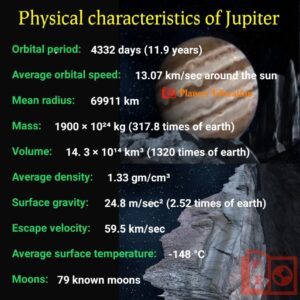
Read in detail:– All about planet Jupiter
6. Saturn Facts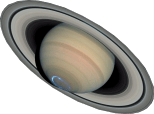
- This planet is the 2nd largest in our solar system with a mass of 5.7 × 1026 kg.
- It is the sixth planet from the sun with a mean distance of 9.58 AU.
- Saturn has massive bright rings made of ice and dust particles that revolve around it.
- Our Saturn has the most number of moons in comparison to all other solar system planets. It has 82 moons with confirmed orbits. According to an estimation Saturn has millions of moonlets (moonlets are comparatively small natural moons that orbit a planet). Moon ‘Titan’ is the largest of Saturn and 2nd largest in the solar system. Check also:- Saturn Moons
- The orbital speed of Saturn is 9.70 km/sec and completes one revolution around the sun in 29.5 earth years.
Read in detail:- Facts about Saturn
7. Uranus Facts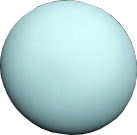
- It was the 1st planet that was discovered by using a telescope in 1781 AD. Uranus is quite farther and the average distance of this planet is approximately 19.20 AU.
- Uranus is an ice-giant planet and it is the coldest planet in our solar system with a recorded minimum temperature of ‘-224 °C’.
- The orbital speed of the universe is 6.81 km/sec and it completes one revolution around the sun in 84 earth years.
- It has 27 known moons and the size of Uranus is about 4 times greater than the earth. (Read about- all the moons of Uranus)
Read in detail:– Uranus Planet Facts
8. Neptune Facts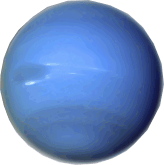
- Neptune is the eighth planet from the sun and the farthest one among all 8 planets of the solar system. The farthest planet has an average distance from the sun is 30.10 AU.
- Since it is not visible to the naked eye so could not be discovered by ancient people.
- It was 1st observed by John Couch Adams in 1846 AD.
- Neptune has the slowest orbital speed of 5.43 km/sec around the sun. It completes one orbit around the sun in 165 earth years.
- Neptune has the lowest average planetary temperature in our solar system.
- It has 14 known moons of which ‘Triton’ is the largest.
Must Check:- Neptune Planet facts and information
These were the 8 planets and their facts are explained by Planets Education in short detail. They were described here in order of increasing distance from the sun.
I hope you have liked reading and getting some interesting facts about them. To read about the planets in detail, check the mentioned links for the related planets.
Frequently Asked Questions (FAQ)
1. What are the Planets in order from the Sun?
The eight planets in order of increasing distance from the sun are Mercury, Venus, Earth, Mars, Jupiter, Saturn, Uranus, and Neptune. And these were the solar system planets in order from the sun. So, Mercury is the closest and Neptune is the farthest one.
2. What are the Planets in order of size?
The above-listed planets are in order of distance from the sun. And all the planets are different in size. Below, you can check the planets in order of size:
Must Check:- Size of Planets in Order
You have shown some real interest, so you might miss some other information about our solar system. Below we have mentioned some article links related to our solar system, except planets.
As we know our solar system also has dwarf planets, comets, asteroids, and other solar system bodies. You must like checking them below:
Check here:-
- To read about the dwarf planets. And here know more about some special dwarf planets like Pluto (largest), Ceres (closest), Makemake (exist in the Kuiper belt region), Eris (farthest dwarf planet), and Haumea.
- Here read about the asteroid belt that contains millions of asteroids.
- You are not going to miss some interesting facts and information about comets.
- Also, read about the Oort cloud which has billions of solar system objects.
